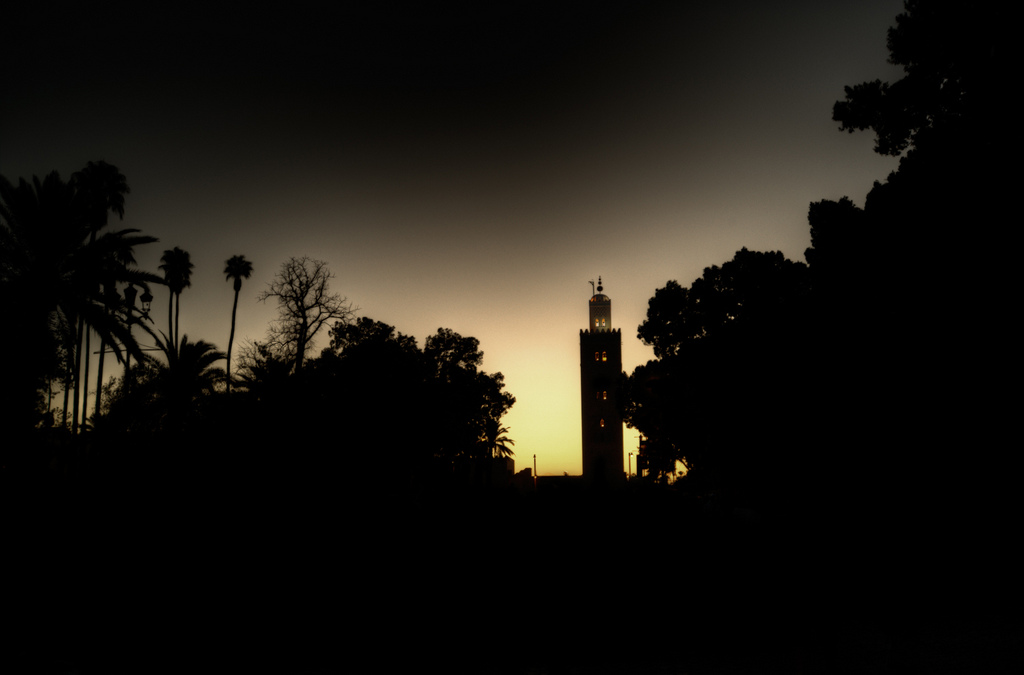Unlike The Vagina Monologues, which brought private subject matter into public discourse, Hijabi Monologues is actually taking the hijab from the public news and media discourse back into women’s personal lives. Even further, the play seeks to re-capture the voices and identities of Muslim American women for themselves. Regarded as an experience that will challenge both outsider and insider understandings of a distinctly American Muslim community, HM takes the viewer on an emotional roller coaster with issues rarely discussed in public space.
Many in the Western media are fascinated with hijab the notion of veiling. Despite this fascination, however, there has been very little accurate and comprehensive knowledge about the diverse population of hijabi women in America. Hijabi Monologues (“HM”) is a play that aims to capture the diverse range of hijabi-in-America experiences, and it has rapidly gained a following through word-of-mouth in underground Muslim American art circles, similar to its namesake, The Vagina Monologues.
Unlike The Vagina Monologues, which brought private subject matter into public discourse, Hijabi Monologues is actually taking the hijab from the public news and media discourse back into women’s personal lives. Even further, the play seeks to re-capture the voices and identities of Muslim American women for themselves. Regarded as an experience that will challenge both outsider and insider understandings of a distinctly American Muslim community, HM takes the viewer on an emotional roller coaster with issues rarely discussed in public space.
Hijabi Monologues’ three founders – Sahar Ullah, Zeenat Rahman, and Daniel Morrison – met while pursuing their Masters degrees in Middle Eastern Studies at the University of Chicago. Zeenat Rahman, a Bengali-American and native of Chicago, consults on public relations and publicity of HM. Dan Morrison, also from Chicago, supervises marketing and business affairs. Sahar Ullah, from South Florida and a Miami Hurricane alumna, is the creative force behind most of the HM content, writing and performances.
The play is comprised of 12 narratives, many based on anecdotes from various women in the American Muslim community. A twelfth narrative was written by another student in the group’s MES program, Leena Al-Arian. Leena’s story is a personal one, centered on the day her father, Sami Al-Arian, had been arrested – an arrest considered one of the most public in the “war on terror.”
Many of the other narratives are on topics equally meaningful and life-changing: teenage pregnancy, a dutiful wife contracting HIV from her adulterous husband, a mother’s grieving over her son’s sudden death. There are also some lighter-hearted stories based on hysterical interactions with curious, non-Muslim Americans and the different types of men who hit on hijabis.
In the last two years, HM has shown in Chicago, Tampa, Cairo, Washington, DC, and in Los Angeles, and plans for a national college tour are underway. The Los Angeles performance, for example, was organized within Lionlike Mindstate’s spoken word open-mic venue. I acted alongside two other Muslim American sisters, Aisha Nouh, a Persian-Egyptian friend, and Jameelah Shukri, an Ethiopian-African American community organizer and labor activist with experience performing spoken word poetry.
Breaking the Hijabi/Non-Hijabi Assumptions
Hijabi Monologues was borne of a joint desire to take the Muslim woman out of the public and make her private, and to decentralize the hijab as the focus of Western popular discourse about Muslim women.
I stumbled into a familiar roadblock when I, a non-hijabi, was interviewed by a reporter from one of the most widely read newspapers in the world who wanted to write a story about Hijabi Monologues. Recurring queries questioned my involvement in a “hijabi”-themed production as a woman who did not cover her head.”
While I may not have had a fitting reply at the time, I realize now that my involvement in Hijabi Monologues, as a non-hijabi, is a testament to the power of these stories to transcend such divisions. As Sahar has said, it seems that American Muslim women have internalized judgment about ourselves over the years, and have become judgmental of each other too, as non-hijabis, hijabis, and niqabis.
Hijabi Monologues is a way for Muslim women to reconnect and understand each other. It was the honesty in the stories that spoke to me, and audiences all over the country. HM is starting from the most visible marker of Islam in America and working its way out in the breaking of commonly-held stereotypes about our community. Even though the non-hijabi woman does not wear the headscarf, it does not preclude the general American society from extending their assumptions about hijabi women onto all Muslim women. In that sense the fate of both non-hijabi and hijabi Muslim American women are intimately intertwined, as they both become prisoners of prevailing media stereotypes. The only difference is the visible marker, the headscarf. Thus the expansion of understanding and the breaking of stereotypes of hijabi women affects perceptions of non-hijabi women.
Tied to these notions of telling one’s story liberated from media constraint and enhanced by the variegations in the Islamic community, Hijabi Monologues puts a premium on the multifarious phonations of a woman’s voice, and not the politics of that voice. In addition to this, and the idealized ethnic diversity in the Islamic ummah, HM also highlights the diverse expressions of modesty in the American Muslimah tapestry, which takes it beyond just a story telling venture or an oral history project, to a movement unifying hijabi and non-hijabi American women under a banner of deferential diversity – in all respects!
May Alhassen is a first year doctoral student in American Studies and Ethnicity at USC, where she also works as a Program Assistant for the university’s newly established Middle Eastern Studies Program. On the side, she performs with “Hijabi Monologues” and also co-hosts a variety-talk show that highlights the achievements of talented Arab and Muslim American youth on Arabic TV station ART called “What’s Happening.” She can be reached at alhassen@usc.edu. A longer, unedited version of this article was previously published in Azizah Magazine.





1 Comment